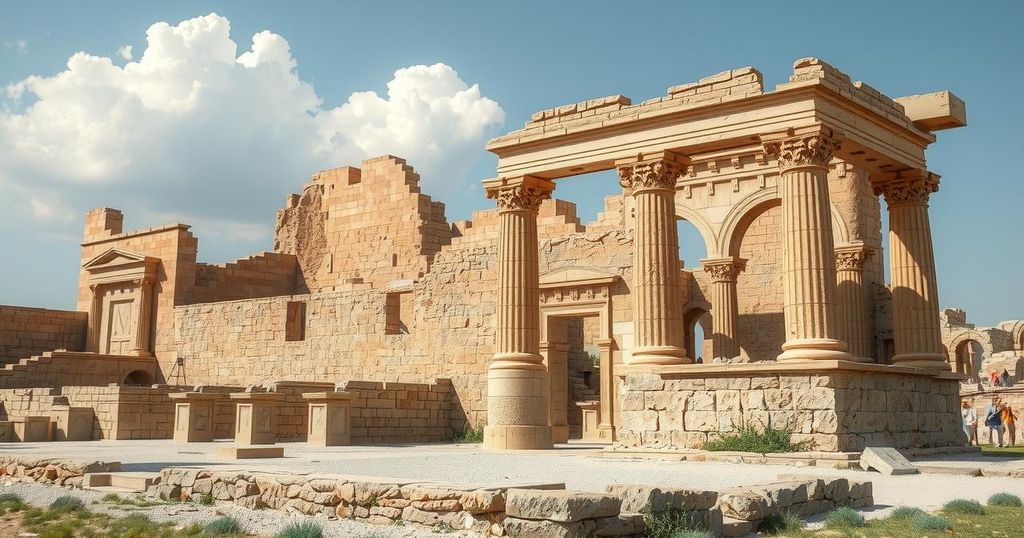Daraa: Cradle of the Syrian Revolution and Historical Significance

Daraa is the principal town in southwestern Syria and the cradle of the 2011 uprising against the Assad regime, often referred to as the focal point of the Syrian Civil War. It serves as a communication hub between Jordan and Syria, is historically significant with ancient ruins, and has an essential agricultural sector, particularly in grain production, despite facing numerous socio-political challenges.
Daraa, located in southwestern Syria, is recognized as the chief town of the Ḥawrān region. Known as “the cradle of the revolution,” it was the epicenter of initial protests during the 2011 uprising against the regime of Bashar al-Assad, which escalated into the protracted Syrian Civil War. The town serves as a vital transportation hub, positioned approximately six miles from the Jordanian border, facilitating communication between Amman and Damascus.
Historically, Daraa has been a significant market center and military garrison, containing remnants from the Greco-Roman era alongside a mosque built in 1253. The region is notably linked to the decisive Battle of the Yarmouk River in 636 AD, which was pivotal in the Arab conquest of Syria. Additionally, Daraa witnessed crucial fighting during World War I.
The protests ignited in March 2011, spurred by the arrest of teenagers who expressed revolutionary sentiments through graffiti, invoking the slogan, “The people want the fall of the regime.” This act of defiance prompted widespread demonstrations against governmental oppression, establishing Daraa as a symbol of resistance. Though the civil war had largely diminished by 2020, tensions reignited towards the end of 2024 when Hayʾat Tahrir al-Sham seized control of the region on December 7.
Daraa is situated in an area conducive to grain production, primarily wheat and barley. To bolster agricultural productivity, the Syrian government implemented various initiatives in the late 20th century, introducing modern farming techniques and addressing challenges posed by volcanic rock in the soil. As of the 2004 census, Daraa’s population was recorded at 97,969, reflecting its significance as both a historical and contemporary locale in Syria.
Daraa’s historical and strategic importance is underscored by its role during pivotal moments in Syrian history, especially in the context of the Syrian Civil War, which began in 2011. The uprising that sparked the conflict arose from a quest for political reform, faceted by longstanding grievances against the Assad regime. Daraa’s agricultural significance is also notable, as it serves as a major grain-producing region within Syria, contributing to the national economy and food security. The town’s rich history, characterized by ruins and ancient architecture, adds to its cultural importance.
In summary, Daraa holds a critical position both in Syria’s rich historical narrative and as a focal point of contemporary socio-political upheaval. Known as the birthplace of the Syrian revolution, it symbolizes the struggles for freedom and reform against authoritarian governance. Moreover, its agricultural productivity continues to play an essential role in supporting the region’s economy amidst ongoing challenges. Daraa’s past and present reflect a microcosm of the broader conflicts and aspirations that define Syria today.
Original Source: www.britannica.com








